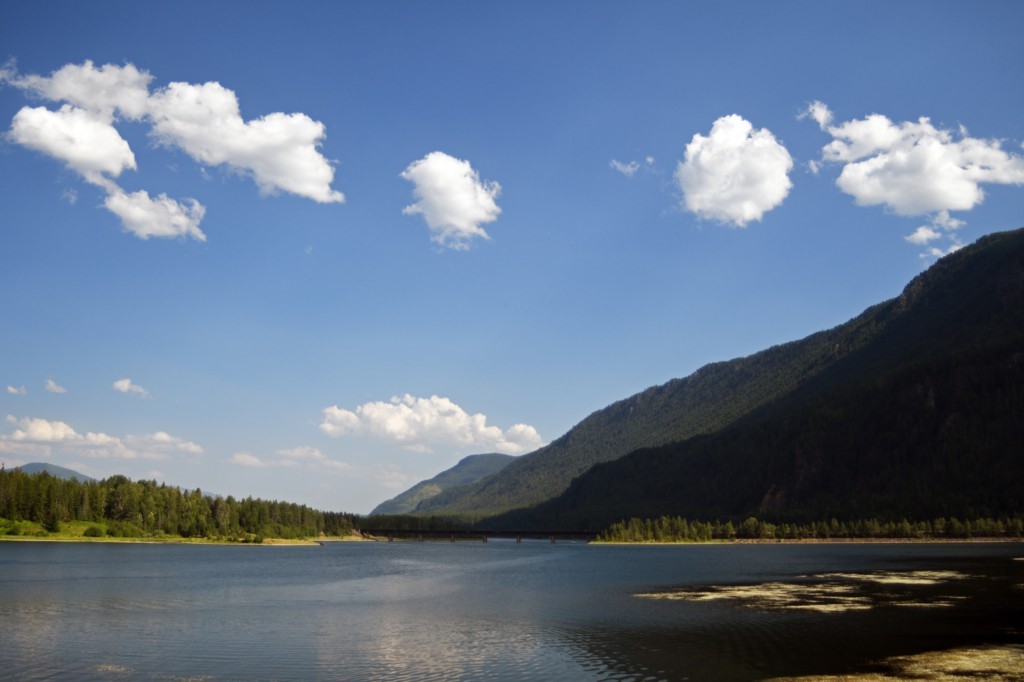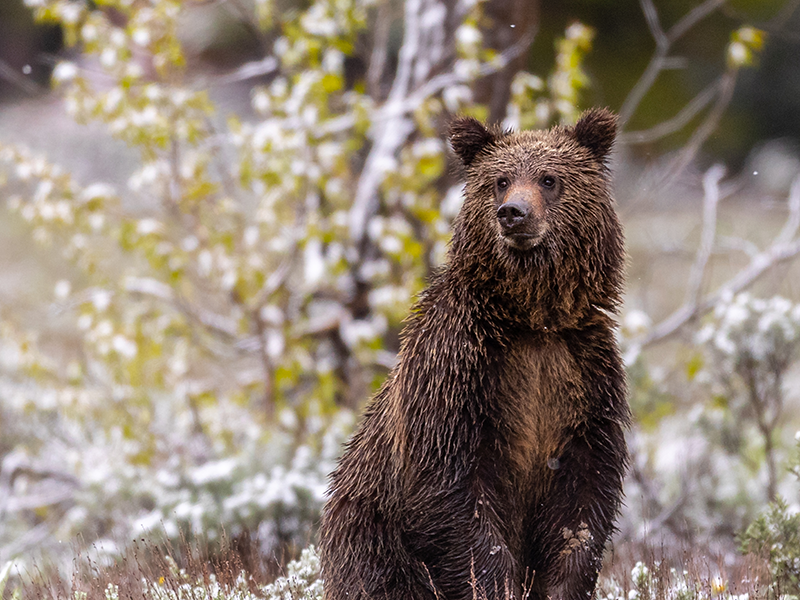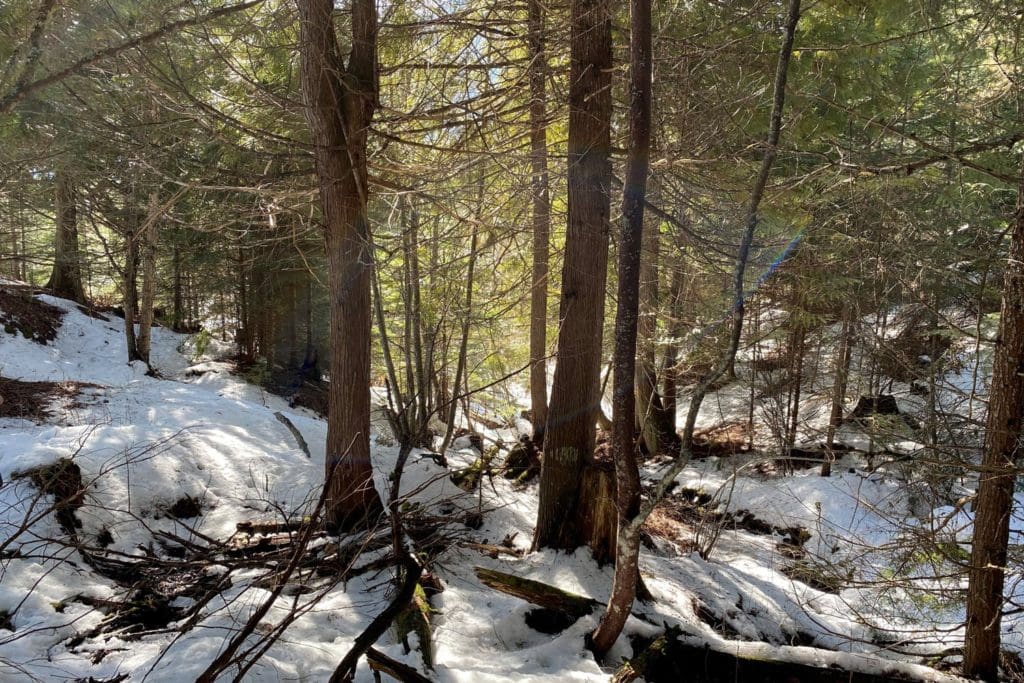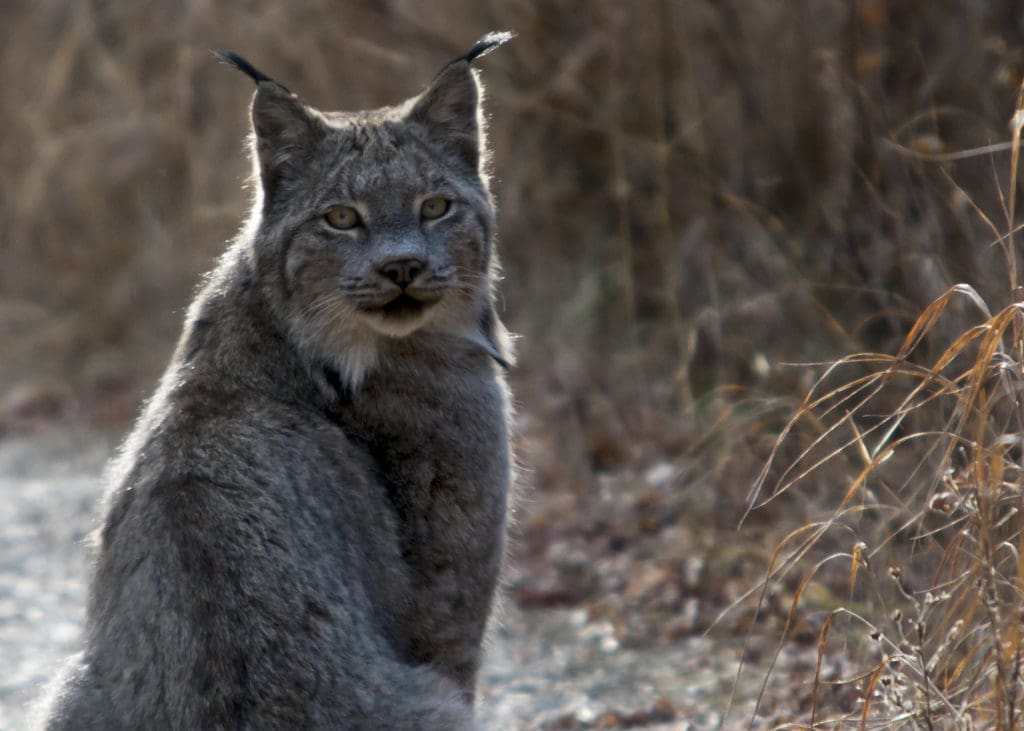Communities, conservation organizations working together to conserve habitat in northwestern Montana wildlife corridor
A key habitat connection for grizzly bears and other wildlife in northwestern Montana will remain open and wild after the Vital Ground Foundation and Yellowstone to Yukon Conservation Initiative (Y2Y) on Monday purchased 80 acres (32 hectares) near the confluence of the Bull River and Clark Fork River.
Against the backdrop of a region-wide development boom, the project helps conserve an important connection for wildlife between the Cabinet Mountains to the north and the Bitterroot Mountains to the south.
Purchased from a landowner committed to protecting open spaces, the acres will be stewarded to maintain fish and wildlife habitat while preserving the rural character of the state’s northwestern corner.
“This project is aligned with our shared values of maintaining the rural, remote and wild characteristics of this important location,” says Jessie Grossman, U.S. program manager for Y2Y.
“Private lands are important to sustaining natural connections for wildlife and we’re excited to continue to work with Vital Ground and landowners in this area.”

A crucial connection for grizzly bears
The Bull River-Clark Fork linkage area provides a habitat connection of regional importance for grizzly bears. In Montana’s northwestern corner, grizzlies endure in much smaller numbers than they do in and around Glacier and Yellowstone national parks.
The project conserves a southward path from the Cabinet-Yaak Ecosystem, home to a recovering population of around 60 grizzlies. Biologists have documented only a handful of movements over the years between that population and neighboring ones but consider connectivity between ecosystems crucial for the species’ long-term survival.
To the south of the project, the Bitterroot Ecosystem extends deep into the Idaho wilderness. This historic and expansive grizzly habitat currently lacks a resident grizzly bear population, seeing only the occasional wandering bear from other areas.
As a potential connector between western Montana, northern Idaho and the Greater Yellowstone Ecosystem, conservation biologists point to the Bitterroot as a key to the goal of a thriving, interconnected grizzly population in the Northern Rockies.

“Grizzly bear linkage across the Clark Fork River is important for the future of bears in the Bitterroot,” says Wayne Kasworm, a grizzly bear biologist for the U.S. Fish and Wildlife Service. He has documented several grizzlies near the project area in recent years, including a female bear that crossed the Clark Fork at least twice this summer.
“This project is a start and a stepping stone to protecting habitat for bears to make that journey.”
By conserving an open, undeveloped movement area between the Cabinet and Bitterroot ranges, the Bull River-Clark Fork project adds a puzzle piece in Y2Y and Vital Ground’s joint work to build regional connectivity for wildlife.
The area also represents a priority in Vital Ground’s One Landscape Initiative, the organization’s strategic effort to conserve the most crucial private lands connecting the Northern Rockies’ wild strongholds.
“We’re at a critical juncture in our work connecting these isolated populations of grizzly bears and other wildlife,” says Mitch Doherty, conservation director for Vital Ground.
“The current real estate boom is rapidly eroding opportunities like these to make landscape-scale habitat connections. This project at the confluence of the Bull River and Clark Fork adds to the network of linkages we’ve already conserved in the region.”

Benefits beyond bears
Lying in a natural bottleneck area for wildlife moving through the Bull River and Clark Fork valleys, the project will maintain important range for elk, moose and sensitive species like wolverine and Canada lynx. With a tributary stream running through the acreage, the effort also protects habitat for native trout and water quality in the larger Lower Clark Fork watershed.
With Montana ranking among the nation’s fastest-growing housing markets, the project carries benefits far beyond wildlife. Increased subdivision and dense development in the Lower Clark Fork would not only impose further habitat fragmentation and increase the risk of conflicts between bears and people but also threaten public access to popular areas for hunting, fishing, hiking and other activities central to the region’s rural identity.
As a nationally-accredited land trust, Vital Ground will hold the land and pursue a stewardship plan combining habitat restoration and open space conservation.
The purchase builds off Vital Ground and Y2Y’s previous Wild River project, a multiyear effort in the next major valley to the north that conserves a similarly important confluence area along Montana’s Kootenai and Yaak rivers. That project has now totaled nearly 200 acres (81 hectares), and together with the Bull River-Clark Fork effort sets a standard for sustaining open space and habitat in linkage areas with great value to wildlife and people alike.
“These corridors matter,” says Grossman. “They support wildlife that need to feed and breed across the West and they support the natural processes that sustain life on Earth. Thinking at the scale nature needs is one step to improving our lands and waters for wildlife and people.”
Major support for the Bull River Linkage Project comes from The Cinnabar Foundation, The Grainger Foundation, The Heart of the Rockies Initiative, The Liz Claiborne and Art Ortenberg Foundation, and The Teton Ridge Foundation.
Header photo: National Park Service


